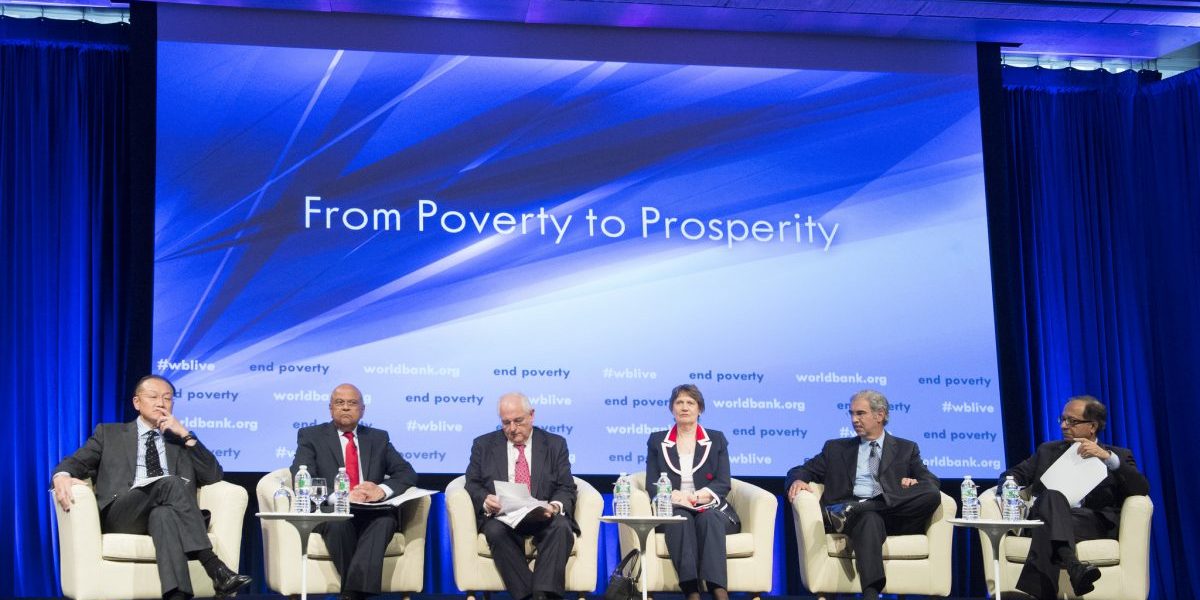But an essential element is lacking: affordable credit. ‘The difficulty in obtaining credit is consistently rated by firms as one of the greatest barriers to operation and growth. … In particular, small business, women and the poor face the greatest difficulty in obtaining finance,’ says a World Bank study, ‘Doing Business in 2005: Removing Obstacles to Growth’.
The conclusion was backed up by an eAfrica survey of 56 business organisations in 31 African countries (eAfrica, February 2004). Respondents cited lack of credit as the top obstacle to growth. In Africa’s cash-based economies, weak financial sectors prevent small businesses from borrowing the capital they need to expand. Mostly, the banks make money through high fees, big margins and trade finance deals, but rarely lend long-term project finance to local firms, businesses say.
Fixing the problem needs fundamental change. Cutting the cost of banking fees is a vital step to bring more Africans into the banking sector, which can boost the amount of savings available for lending. But even when banks have funds, a variety of structural, regulatory and legal problems hinder lending.
Weak systems, low lending
The banking sector in Africa is small, and there’s a limit to which it can fund large projects, says Richard Ketley of South African economics research firm Genesis Analytics. Expensive and unreliable electricity and telecommunications limit the reach of African banks, Ketley says.
‘Financial deepening has not taken place,’ says John Macaskill, head of First National Bank’s operations in Botswana, Namibia, Swaziland and Lesotho, who agrees that the lack of access to banking services undermines economic growth.
Part of the solution would be to increase the ratio of deposits used for lending. South African banks tend to lend out well in excess of 80% of their deposit base, but this can be as low as 20% to 40% of deposits elsewhere in Africa, where economies are mainly cash-based, says Macaskill.
‘It’s possible that there is a mistrust of banks and that there’s a cultural shift that needs to take place,’ he says. But administrative conditions are also unfavourable to banking; legal and taxation systems hard to deal with and property rights not always recognised.
‘Some countries don’t even have national IDs. Compliance and the regulatory environment have become more stringent, and all this adds to the cost of finance,’ Macaskill says.
By developing-world standards, Africa is under-banked, except South Africa, where just over half the population have bank accounts. Consumer finance, such as mortgage bonds for houses and loans for vehicles, is rare outside South Africa. Deposits also tend to be short-term, with concerns about macro-economic stability and volatile interest rates making banks reluctant to offer long fixed-term rates. Reg Rumney, of Johannesburg-based consultancy BusinessMap, blames poorly developed debt markets. African governments issue mostly short-term Treasury bills, with little long-term debt being issued.
‘This raises the cost of debt for the government, and leads to inflexibility,’ Rumney says. ‘You need marketable, liquid debt, so that you can buy and sell it, in a mix of long- and short-term. You need to bring down the cost of capital. How you do it is another question.’
Inadequate legal systems
Zimbabwean entrepreneur Strive Masiyiwa, whose Econet Wireless firm operates in several African countries, says the rule of law is also critical.
‘The people in power don’t consider themselves subject to the law. The courts don’t work,’ he told eAfrica. ‘The reality is that there are only about five countries in the sub-continent where the courts work to protect legal rights.’
If a bad debt judgment can take years to get from the courts, banks are reluctant to lend – or when they do, they demand high levels of collateral from clients. ‘In the US it takes less than a day to get a judgment against someone,’ Richard Ketley says. ‘In Africa, it can take years. Tanzania is impossible, Uganda is OK, and in Nigeria, who pays wins.’
The World Bank says the difficulty of recovering debts is a key obstacle to African business development. Its report, ‘Doing Business in 2004: Understanding Regulation’, examined the business environment in 130 countries. It found that in many emerging markets it was costly to enforce a simple commercial contract. While the cost of enforcement was just 1% of the disputed amount in the UK, Canada and Australia, it was over 100% in countries such as Malawi, Madagascar, Burkina Faso and Indonesia. Resolving a payment dispute took more than 500 days in eight African countries and cost on average nearly 10 times as much relative to national per capita income in sub-Saharan Africa than in the developed world.
African credit is hard to find, in part, because there are no systems to track credit repayment histories of borrowers and blacklist bad debtors. Out of 36 African countries surveyed by the World Bank, only three countries – South Africa, Namibia and Botswana – had any meaningful private or public credit registry systems, according to the bank’s ‘Doing Business in 2005’ study.
The World Bank also says that excessive red tape puts businesses in poor countries at a big disadvantage. Before businesses can borrow, they must formally register their ownership of land or other assets. But the process itself is exceedingly slow and costly in Africa. The bank found that in sub-Saharan Africa, the cost of registering collateral to get credit averaged 41.8% of per capita income, although the range was huge – in Benin it was 80% and 3% in Kenya. The average cost for leading industrialised countries is 5.2%.
The effect is to reduce the supply and raise the cost of bank loans. In much of Africa, banks only lend to the largest local firms and subsidiaries of multinationals because it is so hard to recover debt from defaulters and they pass on the cost of high loan risk to borrowers through higher interest rates and levels of required collateral. Informal businesses, which need credit to grow, are too risky for banks to finance as they often lack collateral, management skills or even literacy.
High risk, high returns
Banks also demand high rates of return on big project finance in Africa because they perceive country risk to be high, taking into account currency, inflation, legal and political risks. In South Africa, projects need to make a real return of 10% to clear their risk, but in China, only 2% is required.
‘Just imagine how many projects we’ve lost to China,’ says Michael Power, from South African financial services provider Investec. ‘Africa received $13 billion in foreign direct investment last year, as a continent. China was probably receiving that every month.’
The risk also pushes up the cost of project finance. ‘The very high cost of capital means that only certain projects get done, and those tend to be in the natural resources sector,’ Power says. ‘It’s a very mathematical process. Politicians don’t understand this, they can’t believe it’s so cut-and-dried. But they’re not the ones who make the decisions. Decisions are made by businessmen, using strict processes to determine whether their numbers add up. And all the goodwill in the world isn’t necessarily going to help.’
Using Power’s formula, between 50% and 70% of ‘bankable’ projects are in the oil sector. ‘For instance, Angola received the most foreign direct investment (in Africa last year) and that’s because of the offshore oil projects,’ Power said.








